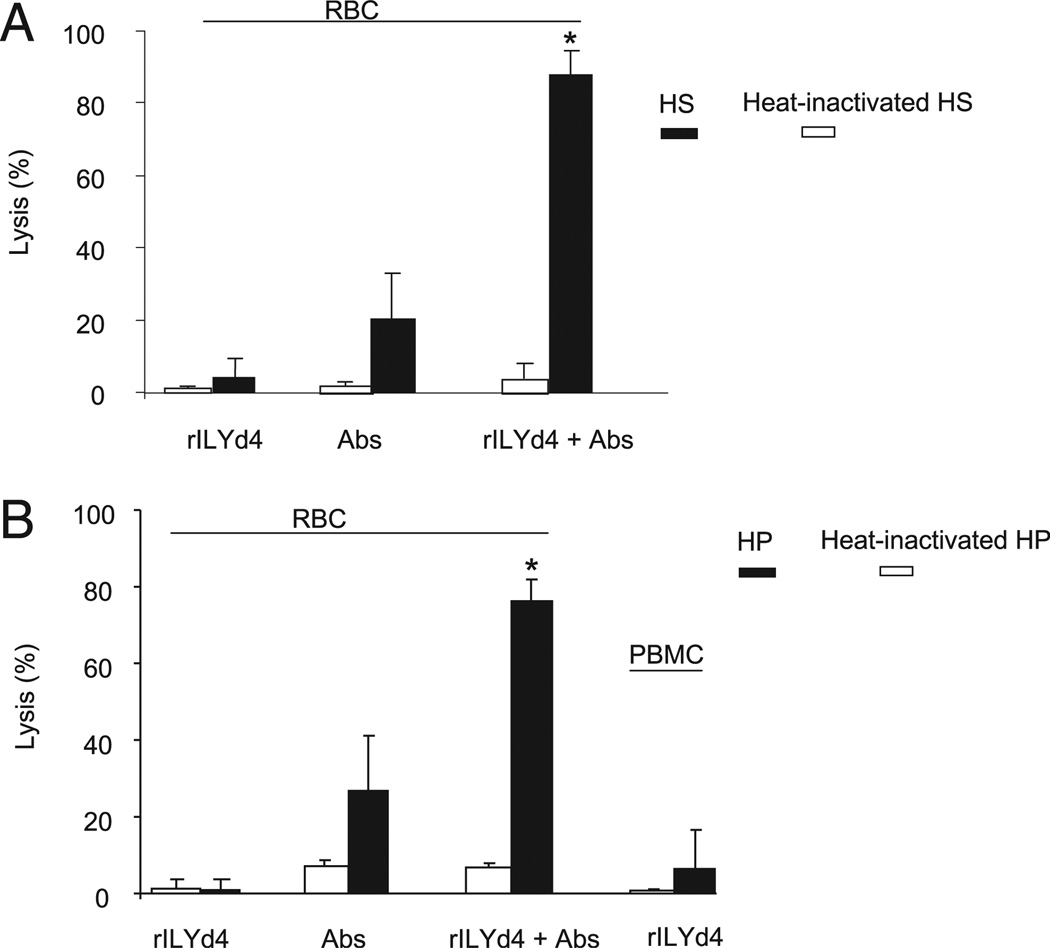FIGURE 6.
Incubation of HIV-1–infected patient’s erythrocytes and PBMCs with 50% HIV-1–infected patient’s serum or plasma in the presence of rILYd4 did not result in a nonspecific lytic effect on the erythrocytes and PBMCs. A, The HS from and HIV-1–infected patient (patient 17 in Table I) was used as a source of complement and anti–HIV-1 Abs to investigate the bystander effect of rILY4 on the erythrocytes. B, The HP from an HIV-1-infected patient (patient 14 in Table I) was used as a source of complement and anti–HIV-1 Abs to investigate the bystander effect of rILYd4 on the RBCs or PBMCs. The patient’s erythrocytes were sensitized by anti-human erythrocyte Abs and exposed to HP or heat-inactivated HP. The results are the mean values ± SD from three experimental results. rILYd4, in the presence of rILYd4 (20 µg/ml), HIV-1–infected patients’ cells were exposed to 50% HS or HP and heat-inactivated HS or HP; Abs, HIV-1 infected patients’ erythrocytes were sensitized by anti-human erythrocyte Abs and then exposed to 50% HS or HP as well as heat-inactivated HS or HP; rILYd4 + Abs, in the presence of rILYd4 (20ug/ml), HIV-1–infected patients’ erythrocytes were sensitized by anti-human erythrocyte Abs and then exposed to 50% HS or HP and heat-inactivated HS or HP. *p < 0.01 versus heat-inactivated HS or HP treatment in rILYd4 + Abs.

